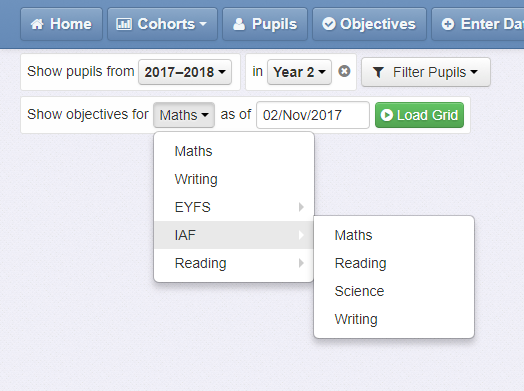Teacher Assessment Frameworks KS1 & KS2
We're commonly asked whether it's possible to replace a school's objective statements for years 2 and 6 with the criteria from the Teacher Assessment Frameworks for KS1 and KS2 (formerly the Interim Teacher Assessment Frameworks.
We tend to caution against tracking only these Assessment Framework statements, following the advice in the "Guidance for teachers" section:
These frameworks should be used only to make a statutory teacher assessment judgement at the end of the key stage following completion of the key stage 2 curriculum. They should not be used to track progress throughout the key stage.
and
The frameworks are not a formative assessment tool: they are not intended to guide individual programmes of study, classroom practice or methodology. Teachers should assess individual pieces of pupils’ work in line with their school’s own assessment policy and not against the frameworks. At the end of the key stage, teachers should make a judgement against the frameworks based on their own assessments of pupils’ work.
The main concern is that you need to be able to show (to Ofsted etc) that you're covering the whole curriculum, and not just the criteria covered in the Assessment Frameworks.
With this in mind, if you are hoping to track the Assessment Frameworks using Insight's objectives grids, one option is to have them set up as standalone grids which you can track alongside your main curriculum grids:

Another general worry about tracking these criteria in place of your main curriculum objectives is that the criteria are liable to frequent changes year on year. This means that looking at past achievement and filling in gaps might become very fiddly.
Of course our philosophy at Insight is that ultimately assessment policy should be determined by schools and not by us. So this is your decision and we can replace the Y2/6 statements on your main curriculum grids with the Assessment Framework criteria if you're happy that that's what you want to do!

